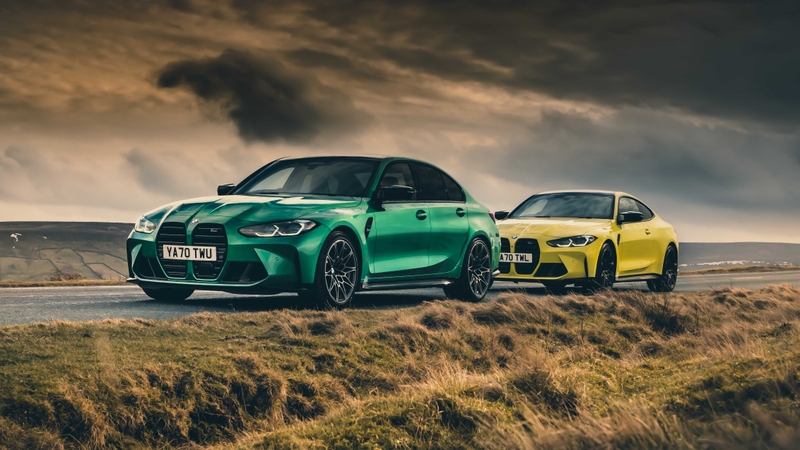









Used BMW X1 Review (2015-2022)
The BMW X1 is the brand’s entry-level SUV, but you wouldn’t know it.
It’s spacious, luxurious, economical and even good to drive. Plus, it’s not vastly more expensive than rivals on the used market.
- Feels like an expensive car
- Impressive rear-seat space
- User-friendly interior
- Rivals have more modern interiors
- Potentially high servicing costs
- Small infotainment screen on earlier X1s
Should I buy a used BMW X1?
While the BMW X1 shares most of its parts with the BMW 1 Series (and Mini Countryman), it feels every bit like a miniature BMW X3. In fact, your neighbours might mistake it for the X3, such is the X1’s confident styling and SUV stance.
Compared to the X3, the X1 looks like excellent value. Yes, you get a smaller number on the bootlid, but the X1 is considerably cheaper and doesn’t make you miss out on much space or the luxury materials that BMW prides itself on. This X1 has now been superseded by a newer version, but this car – the second-generation X1 – is still a fantastic family buy.
The downsides are really minor. It’s a BMW, so you can expect to pay higher servicing and insurance costs than something more mainstream like a Nissan Qashqai or Ford Kuga. The screen is a little busy on some displays, and there are a couple of blank buttons on the steering wheel. But that’s probably the limit of our gripes with the excellent X1.
Interior and technology
Proper physical buttons were still commonplace when this X1 launched in late 2015 and, even after the 2019 facelift, BMW kept the dashboard tactile. So, while you could argue that the interior of the X1 doesn’t look as modern as the Mercedes GLA and Audi Q3 inside, for the most part it’s easier to use on a daily basis.
The dashboard is neat and considered, putting major functions within easy reach. All the touchpoints – and there are a lot – feel high-quality, from the buttons and switches to the leather steering wheel and seat upholstery. A slab of gloss black trim adds visual appeal, and the ambient lighting – standard on xLine and M Sport trims – is a nice addition for night-time drives.
Practicality
This is another area where the X1 doesn’t feel like a baby Beemer at all. The rear-seat space is huge, with limo-like amounts of legroom and plenty of headroom even if you’re much taller than average. With a fairly flat rear bench and lots of elbow room, you can squeeze three adults in across the rear seats – or, if you’re not fully laden with passengers, there’s a pull-down central armrest with a couple of cupholders, and USB ports to charge devices.
The 505-litre boot is only about 10% smaller than the X3’s boot – in real-world use, you’ll struggle to notice the difference. The X1 is more than big enough to be useful family transport, with plenty of room for a couple of pushchairs, umpteen hundred coats and puddle suits, or a week’s worth of holiday ‘essentials’. Petrol and diesel cars also benefit from a large underfloor storage area, which could be useful for stashing away a breakdown kit or keeping high-value items out of sight. Plug-in hybrid versions get a smaller underfloor space.
Engines and performance
Yes, the BMW X1’s engine range is shared with a couple of Mini models, but when have you ever heard bad things about Mini engines? In the heavier X1, the entry-level 136hp 1.5-litre ‘18i’ petrol offers respectable, willing performance, while the 2.0-litre ‘20i’ petrol engine makes the X1 decently quick for a family SUV.
Diesel versions offer an appealing blend of fuel economy and performance for motorway regulars, and both petrol and diesel engines are available with front-wheel drive or with BMW’s grippy xDrive four-wheel-drive system. Most X1s have an automatic gearbox.
The xDrive25e plug-in hybrid offers four-wheel drive and an automatic gearbox as standard. Introduced in January 2020, the hybrid combines the 1.5-litre petrol engine with a 10kWh battery and an electric motor, for a total output of 220hp and a 30-mile electric range. If you do a lot of short journeys and can recharge at home, it can save you a lot of money in fuel versus a solely petrol-powered X1.
Driving and comfort
The eagerness and sporty DNA from Mini and BMW models has made it through to the X1. This is one of the best-driving SUVs, and is arguably more entertaining than it needs to be. The engines and gearbox don’t leave you waiting for a response – some automatics feel like you’ve just woken them up and they need to work out what’s going on, but the X1 usually feels ready to go at a moment’s notice.
To cope with quick direction changes and fast cornering, the X1’s suspension has a firm side. Yet it manages to be compliant over most road surfaces, smothering bumps before they get a chance to disturb occupants. It’s comfortable and refined at high speed, especially as the engines aren’t particularly audible at 70mph.


























































